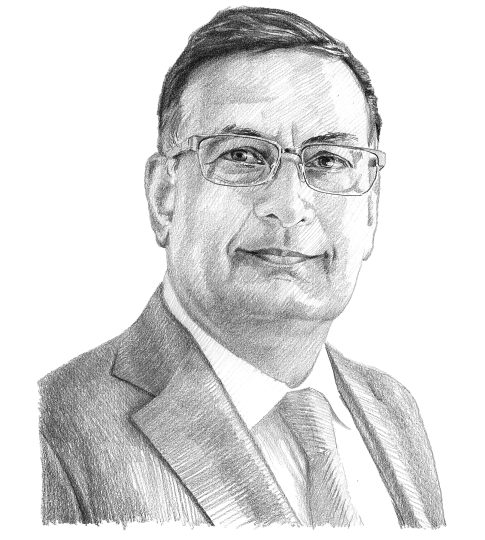Ouster in Bangladesh fuels instability
The political crisis in Dhaka deepened after Prime Minister Sheikh Hasina fled the country amid violent protests.

In a nutshell
- Technocrats and the military control Bangladesh, fresh elections uncertain
- Economic woes, Islamist threats and a refugee influx fuel ongoing instability
- U.S.-Bangladesh relations may shift, potentially benefiting China
After weeks of street protests and violence across the country, Bangladesh’s army chief, General Waker-uz-Zaman, in August announced the resignation of long-serving prime minister, Sheikh Hasina Wajid, who fled the country for self-imposed exile in India. Although the Bangladeshi army (and Western governments, including the United States) have been careful not to describe Sheikh Hasina’s ouster as a coup, there is little doubt that the army will call the shots in the interim government that has been put in place. The situation calls into question the timetable for a new election and adds to strife within the South Asian country.
When Sheikh Hasina (the daughter of the country’s first president), prime minister from 1996 to 2001, returned to power after elections in 2008, Bangladesh had come out of an experiment in hybrid military-technocratic rule that now awaits the country again. Sheikh Hasina was hailed as an icon of democracy in Bangladesh and was its longest-serving prime minister. Her policies led to economic expansion, and she dealt with radical Islamists with an iron fist. But her sternness was not reserved only for threats to the state’s stability, and her later years in power were highly autocratic.
Although Sheikh Hasina’s Awami League (People’s League) went on to win general elections in 2014, 2018 and earlier this year, the credibility of the election process gradually diminished due to one-sided outcomes. Her fourth consecutive term as prime minister, which began in January, started amid allegations of poll rigging and high-handedness against an opposition paralyzed by years of repressive measures.
An experiment in hybrid military-technocratic rule now awaits the country.
Her supporters had justified her ruthless suppression of dissent as the necessary price for economic development in a country vulnerable to religious and nationalist polarization, and threatened by jihadists and drug dealers. That logic provided little comfort to those at the receiving end of extrajudicial killings, forced disappearances and arbitrary arrests. As often happens under authoritarian governments, the anger and frustration of some segments of society built up over the years.
Sheikh Hasina consolidated support among those who took part in the independence struggle by rewarding the families of freedom fighters and focusing on settling scores with Islamists who had fought alongside the Pakistani army against Bangladesh’s independence in 1971. But it meant little for young Bangladeshis who grew up years after independence and had other aspirations.
Factors leading to discontent
Economic and social distress, combined with political disenchantment ahead of the January 2024 elections, accumulated in recent years, cascading to the breaking point that caused Sheikh Hasina’s ouster. The Covid-19 pandemic hit Bangladesh’s ready-made garments industry, the country’s major economic engine and foreign exchange driver. Depleted foreign exchange reserves and high inflation resulted in a slowing economy, which in turn resulted in approval for the ruling party plummeting from 76 percent in 2019 to 44 percent in 2023.
Nevertheless, election officials declared the Awami League the winner with 75 percent of parliamentary seats in an election marred by violence and protests. That should have been a warning sign for the erstwhile prime minister that unrest was brewing. But Sheikh Hasina continued with business as usual until student protests erupted in July over a quota system for government jobs that disproportionately benefits the descendants of freedom fighters.
The political opposition, civil society organizations and Islamists quickly joined the student protests, which spiraled into a violent campaign for the prime minister’s resignation. Over 300 people died, hundreds were injured and around 10,000 people were detained during these protests, which brought the country to a halt.
Sheikh Hasina’s ouster is unlikely to bring stability to Bangladesh, the world’s 35th-largest economy home to 171 million people. Bangladesh has to balance the strategic concerns of its large neighbor, India, and that country’s rival, China, and of global powers like the U.S. Social unrest will continue if Islamist opponents of the Awami League pursue reprisals, as is expected. This would further add to ongoing economic turmoil, in addition to challenges created by the influx of Rohingya refugees from Myanmar and internal security threats from jihadist groups.

The caretaker government, backed by the military, will probably organize elections within one to two years. But the outcome and timing of elections are unpredictable. Since Bangladesh’s 1971 independence, the nation’s politics have been defined by two families and parties: the Awami League, led by independence leader Sheikh Mujibur Rahman and his daughter, Sheikh Hasina; and the Bangladesh Nationalist Party, BNP, formed in 1978 by military ruler Ziaur Rahman, now headed by his widow, Khaleda Zia.
The parties have accused each other in the past of undemocratic behavior. Neither has proved adept at smoothly transferring power to its rival after losing an election.
One of the army’s first decisions after Sheikh Hasina’s removal from office was to release the BNP leader, Ms. Zia, from prison. The BNP, however, remains in disarray and needs time to reorganize. The technocrats who are likely to be part of the government, notably Nobel laureate Dr. Muhammad Yunus, could help run the government machinery, but they lack the political acumen to create a new party and lead it to victory in elections. Any effort to extend the tenure of the caretaker government, without elections, will be met with resistance from political parties.
Economic crisis and Islamists exacerbate strife
Meanwhile, Bangladesh continues to grapple with an economic crisis. Inflation hovers at 9.5 percent and Bangladesh’s foreign exchange reserves have been falling since September 2021 despite a series of government initiatives to reverse the trend. The country’s foreign exchange reserves stand at $18.4 billion, just enough to pay for imports for over three and a half months.
Trade unions in the garment industry, which participated in the recent protests for Sheikh Hasina’s ouster, have been insisting on a minimum monthly wage of $208 instead of the current $110. If the caretaker government concedes to the unions’ demand, the competitiveness of the garment sector might well diminish, adding to Bangladesh’s economic woes. Furthermore, costly loans taken from China to finance large infrastructure projects and money borrowed from the IMF to deal with foreign exchange shortages need to be repaid.
Read more on South Asia
- India’s Modi faces the challenges of coalition government
- Pakistan’s perpetual crisis
- Revolution leaves Myanmar up for grabs
Among other challenges, the influx of Rohingya refugees from Myanmar, which began in 2017, continues to strain Bangladesh’s resources and social cohesion. Nearly 1 million Rohingya Muslim refugees reside in camps in dire conditions. Despite international pressure, Myanmar refuses to repatriate its citizens and the refugees face friction with local Bangladeshis who resent them.
Islamist extremism is a threat to Bangladesh’s internal stability, and requires the attention of a future Bangladesh government. The Awami League, under Sheikh Hasina’s leadership, portrayed itself as being tough on Islamists. It set up a Counter Terrorism and Transnational Crime Unit (CTTCU) to thwart terrorist activity. Islamists claim the measures violate their civil liberties. As the new regime dismantles some of the anti-Islamist policies of the outgoing government, religious violence will likely return. Even during recent protests, there were reports of Islamist attacks and harassment targeting Bangladeshi Hindus and Buddhists.
Beyond the borders of Bangladesh
In the realm of foreign policy, Sheikh Hasina’s ouster may ease relations with the U.S., which was critical of human rights violations and democratic backsliding in the country on her watch.
Additionally, relations with India might suffer. Historically, Sheikh Hasina and the Awami League have supported close ties with India, which they viewed as Bangladesh’s benefactor during its struggle for independence. But other groups, including the BNP and the Islamists, have long described the Awami League’s close association with India as subservience.
Sheikh Hasina’s governments managed a balancing act between the U.S. and China, the latter of which has invested nearly $7 billion in infrastructure and economic development projects in Bangladesh. Some of these investments form part of China’s Belt and Road Initiative. While the U.S. is unlikely to match China’s levels of project funding, it does want Dhaka to distance itself from Beijing and become an active part of the Washington’s Indo-Pacific strategy. Any reduction of India’s influence in Bangladesh would be China’s gain. The U.S. may end up regretting its policy toward Bangladesh if Sheikh Hasina’s ouster results in China securing greater influence in the country as it strives to become the preeminent global power.
Scenarios
Most likely: Military and technocrats slowly move toward another election
Moving forward, the most likely scenario appears to be a repetition of Bangladesh’s past patterns. The army will run the affairs of the country with the help (and political cover) of a caretaker technocrat government. Its hope will be that students and other protestors return to their homes and things calm down as the object of their immediate anger, the ousted prime minister, is gone. But if there are further protests by Awami League supporters or the opposition, the army will clamp down and prioritize political stability and economic growth. If elections are held within the next three years, the army’s preference would be for a non-Awami League coalition government.
Less likely: An Awami League countercoup
The less likely scenario is continued or sporadic unrest on the streets with conflicts between Awami League supporters and their opponents. The Awami League has supporters within the army and it may even try to instigate a countercoup. If it succeeds, then unrest will continue until one side prevails.
Least likely: Entrenched protests and extended military rule
The least likely scenario is that the army is unable to restore political stability and protests continue. This, combined with ongoing economic distress, would lead to direct military rule or a longer period of a military-led, technocrat government.
For industry-specific scenarios and bespoke geopolitical intelligence, contact us and we will provide you with more information about our advisory services.









